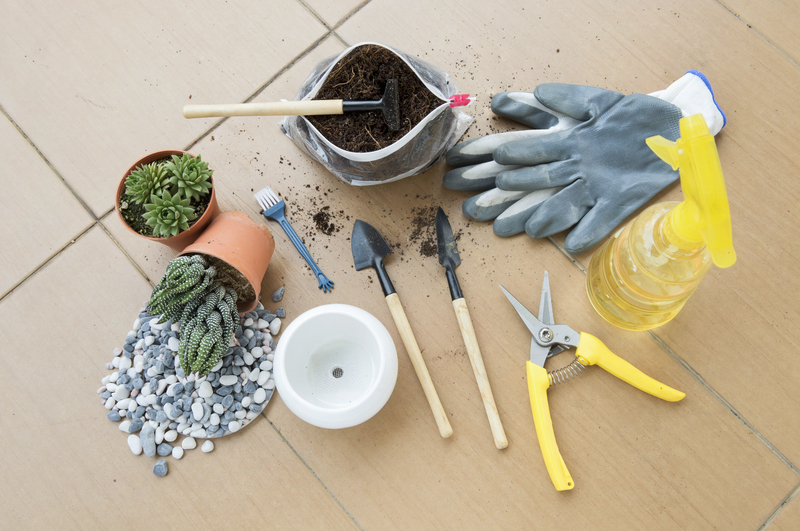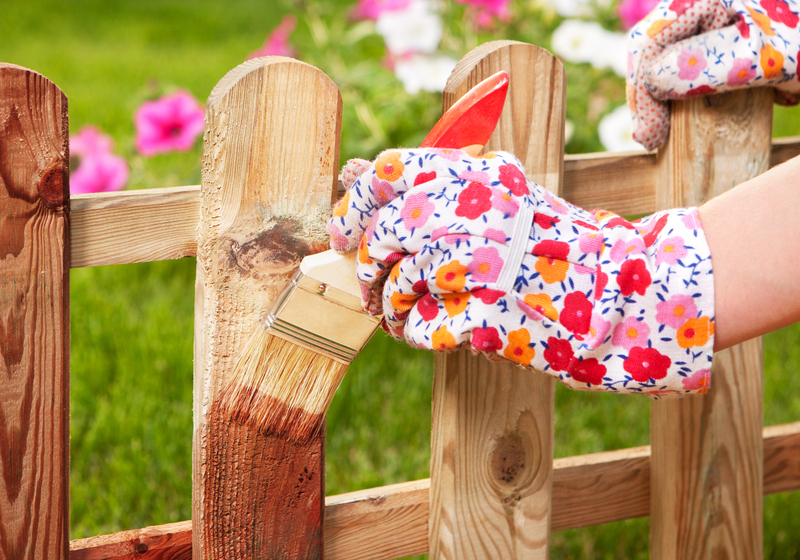The Art of Growing a Diverse Herb Collection
Posted on 04/07/2025
The art of cultivating a thriving and diverse herb garden is a deeply rewarding pursuit that can delight the senses and elevate cooking, medicine, and home decor. Whether you're a green-thumbed enthusiast, a passionate cook, or a curious beginner, there is enormous satisfaction to be found in nurturing a varied herb assortment. In this comprehensive guide, we'll explore everything you need to know to successfully grow your own diverse herb collection, from selecting the perfect herbs to maintenance, harvesting, and creative uses.
Why Cultivating a Varied Herb Garden is Beneficial
Growing a wide range of herbs is more than just adding greenery to your garden. There are a multitude of advantages to cultivating a plentiful selection:
- Culinary enrichment: Access an array of fresh flavors to enhance your daily cooking.
- Health benefits: Herbs like basil, mint, and rosemary provide antioxidants and medicinal properties.
- Pollinator magnet: Herb flowers attract bees, butterflies, and other pollinators to your garden.
- Pest control: Many herbs naturally repel unwanted insects.
- Aesthetics and fragrance: A diverse herb array offers stunning visuals and aromatic pleasure.
- Sustainability and self-sufficiency: Reduce reliance on store-bought herbs and lower your carbon footprint.

Understanding the Basics: What Constitutes a Diverse Herb Collection?
Herbs are plants valued for their flavor, fragrance, medicinal, and decorative uses. A diverse herb collection typically features a mix of:
- Culinary herbs – e.g., basil, parsley, thyme, oregano, cilantro, sage.
- Medicinal herbs – e.g., echinacea, chamomile, lavender, calendula.
- Aromatic and ornamental herbs – e.g., lemon verbena, scented geraniums, rosemary.
- Exotic and rare varieties – e.g., shiso, epazote, lemon balm, Vietnamese coriander.
Embracing herb diversity means choosing varieties from different families, climates, and uses, creating a vibrant tapestry within your garden.
Planning Your Herb Garden: Factors to Consider
1. Sunlight Requirements
Most herbs prefer full sun, but some thrive in partial shade. Basil, rosemary, oregano, and thyme flourish with at least six hours of direct sunlight daily. Conversely, mint, parsley, and cilantro tolerate or even prefer some shade, especially in hotter regions.
2. Space and Garden Type
- Traditional in-ground plots: Ideal for large, permanent, and expansive collections.
- Raised beds: Offer better drainage and soil flexibility, great for varied plant needs.
- Container gardening: Perfect for small spaces, balconies, patios, and urban environments; allows easy repositioning for optimal sun.
3. Climate and Hardiness Zones
Know your USDA Hardiness Zone or local climate patterns. Some herbs like rosemary and lavender love Mediterranean conditions, while parsley and chervil tolerate cooler weather. Choose varieties that match your garden's microclimate for a robust, diverse herb garden.
4. Soil Quality and Drainage
Most herbs favor well-drained, moderately fertile soil. Incorporate organic matter like compost to enrich clay or sandy soils. Some, such as thyme and oregano, thrive in poorer, rockier soils, so tailor your soil amendments accordingly.
5. Watering Needs
- Moisture-loving herbs: Parsley, chives, cilantro.
- Drought-tolerant herbs: Rosemary, thyme, sage.
Group herbs with similar moisture demands to ensure optimal growth and prevent root rot in water-sensitive varieties.
Selecting Herbs for a Truly Diverse Collection
To master the art of growing a diverse herb collection, aim beyond the basics. Mix annuals, perennials, and biennials. Include native herbs along with exotic imports. Some must-have varieties to consider for your garden:
Classic Culinary Herbs
- Basil (Ocimum basilicum)
- Parsley (Petroselinum crispum)
- Chives (Allium schoenoprasum)
- Thyme (Thymus vulgaris)
- Oregano (Origanum vulgare)
- Rosemary (Rosmarinus officinalis)
- Sage (Salvia officinalis)
- Cilantro/Coriander (Coriandrum sativum)
- Dill (Anethum graveolens)
Unusual Sensory and Medicinal Herbs
- Lemon balm (Melissa officinalis)
- Lemongrass (Cymbopogon citratus)
- Shiso/perilla (Perilla frutescens)
- Epazote (Dysphania ambrosioides)
- Borage (Borago officinalis)
- Fennel (Foeniculum vulgare)
- Lovage (Levisticum officinale)
Herbs for Pollinators and Beauty
- Lavender (Lavandula angustifolia)
- Calendula (Calendula officinalis)
- Borage (Borago officinalis)
- Anise hyssop (Agastache foeniculum)
- Bee balm (Monarda didyma)
Mixing these types creates year-round interest and maximizes the uniqueness of your herb garden.
Best Practices: Planting and Caring for a Mixed Herb Garden
Starting Herbs from Seed vs. Buying Transplants
Seeds: Growing from seed allows you to choose from hundreds of varieties, ensuring less common and heirloom options. However, seeds may require more patience and care during early stages.
Transplants: For instant gratification and a head start, use young plants from nurseries. This is ideal for uncommon herbs that are difficult or slow to germinate.
Tip: Combine both methods to increase the diversity of your herb garden and ensure season-long harvests.
Companion Planting for a Harmonious and Diverse Herb Layout
Certain herbs thrive when grown together - a practice known as companion planting. Basil benefits tomatoes and peppers, chives deter pests from carrots, and marjoram is a universal companion. Avoid planting aggressive spreaders like mint in open beds; instead, grow them in containers to prevent them from overtaking other herbs.
Proper Spacing and Succession Planting
- Space herbs according to mature size to prevent overcrowding.
- Practice succession planting: sow seeds at intervals to ensure continuous fresh harvest, especially for fast-growing annuals like cilantro and dill.
Fertilizing and Maintaining Soil Health
Herbs are generally light feeders. Too much fertilizer can diminish flavor potency.
- Add compost or well-rotted manure at planting time.
- Top up with light side-dressing of compost mid-season for perennials.
- Avoid high-nitrogen fertilizers that encourage leafy growth at the expense of aromatic oils.
Pest and Disease Management in a Mixed Herb Environment
Most herbs are robust, but some are susceptible to aphids, fungal diseases, or slugs.
- Plant a variety of herbs to minimize pest outbreaks.
- Handpick pests or use gentle insecticidal soap if necessary.
- Ensure good air circulation to ward off mildew and rot.
- Avoid overhead watering and mulch to conserve soil moisture.
Harvesting and Preserving Your Herb Diversity
Regular harvesting promotes bushier growth and prolongs the life of annual herbs. Snip leafy sprigs in the early morning when essential oils are most concentrated. For perennial herbs, cut no more than one-third of the plant at a time to prevent stress.
Preservation Techniques:
- Drying - Hang bunches upside down in a cool, dry place. Perfect for oregano, thyme, and sage.
- Freezing - Chop and freeze in ice cube trays for herbs like basil or parsley.
- Infusions - Make oils, vinegars, and simple syrups with surplus herbs.
Creative Uses for Your Homegrown Herb Collection
Culinary Adventures
Fresh herbs amplify dishes and enable experimentation:
- Blend unique pesto with basil, chervil, or cilantro.
- Create herbal teas using mint, lemon balm, or chamomile.
- Garnish soups, pasta, salads, and cocktails.
Medicinal and Wellness Applications
- Brew calming tisanes from lavender and chamomile.
- Include echinacea or calendula in homemade salves.
Natural Home Decor and Fragrance
- Crafters can make wreaths, potpourri sachets, or dried herb bouquets.
- Use fresh sprigs as aromatic table arrangements.
Troubleshooting Common Challenges in Herb Gardening
When Herbs Struggle: Diagnosis and Solutions
- Yellowing leaves: Often a sign of overwatering or nutrient deficiency. Improve drainage and use compost.
- Wilting or stunted growth: Check for pests or root crowding. Thin seedlings and separate overcrowded pots.
- Diminished aroma/flavor: Herbs grown in too-rich soil or too much shade may lose strength. Ensure ample sunlight and moderate feeding.
- Invasive growth: Confine runners like mint and lemon balm to containers.
Seasonal Tips for Growing Herbs Year Round
Spring & Summer: Prime Growing Season
- Sow seeds indoors early for a head-start.
- Plant tender annuals outdoors after the last frost.
- Keep up regular harvesting to encourage bushiness and prevent flowering.
Autumn: Extending the Harvest
- Pot up select herbs (parsley, chives, oregano) and bring them indoors for continued winter harvests.
- Dry or freeze surplus before the first frost.
Winter: Indoor Herb Gardening
- Grow hardy perennials on windowsills with ample sunlight.
- Supplement with grow lights if needed in darker months.
- Maintain humidity for tender varieties.

Designing a Beautiful & Functional Herb Sanctuary
Combine form with function by arranging your herbs creatively:
- Design in spiral beds for a compact yet diverse arrangement.
- Use vertical planters or hanging baskets for limited spaces.
- Edge paths or beds with low-growing herbs like thyme or chives.
- Mix flowering and foliage types for visual appeal.
The Joys of Growing a Diverse Herb Collection: Final Thoughts
The art of cultivating a varied and bountiful herb garden rewards the gardener with fragrance, flavor, medicinal benefits, and pollinator support year-round. Whether your ambition is a classic kitchen garden or a unique collection featuring rare global specimens, diversity is the secret to success. Take time to plan, experiment with new varieties, and enjoy the process of discovery as your garden flourishes.
With careful selection, attentive care, and creative harvesting, your diverse herb collection will thrive and continually enhance your home, cuisine, and well-being. Begin your gardening journey today and let the art of growing herbs enrich your life--one leaf at a time!

